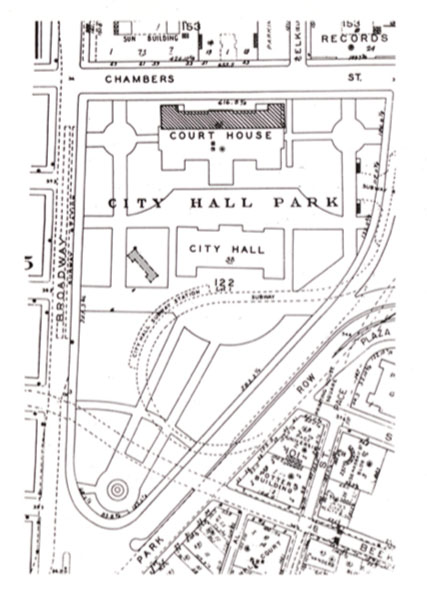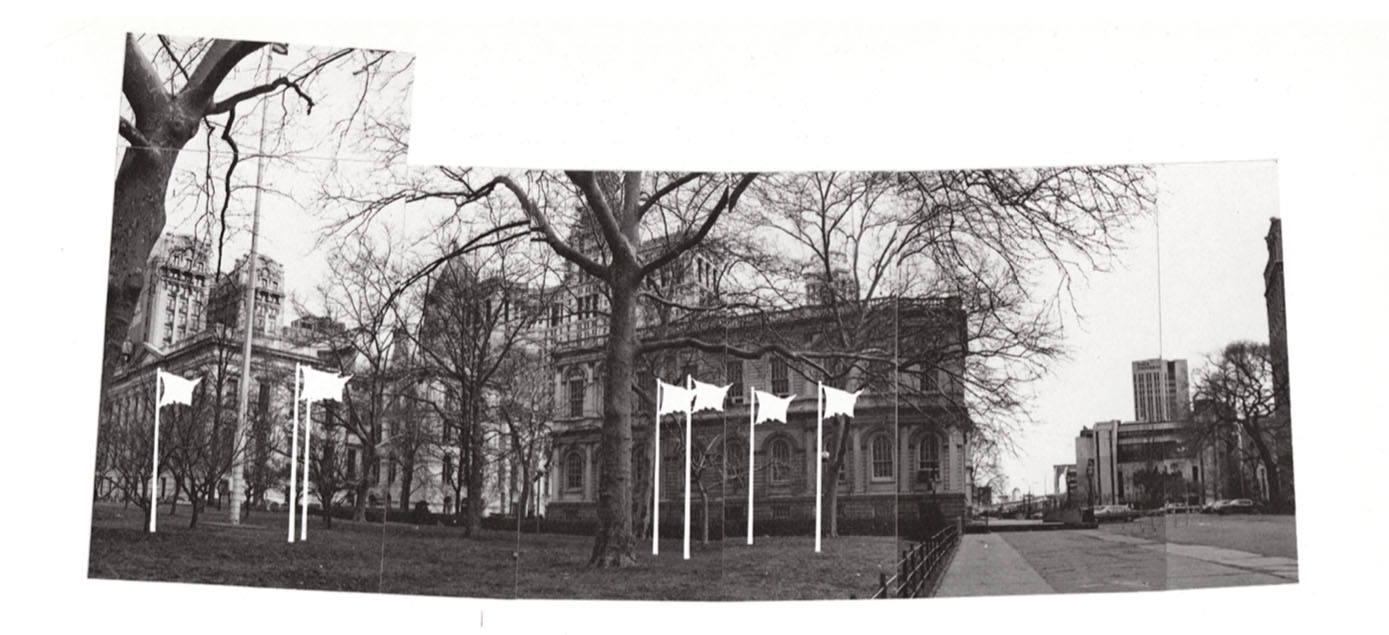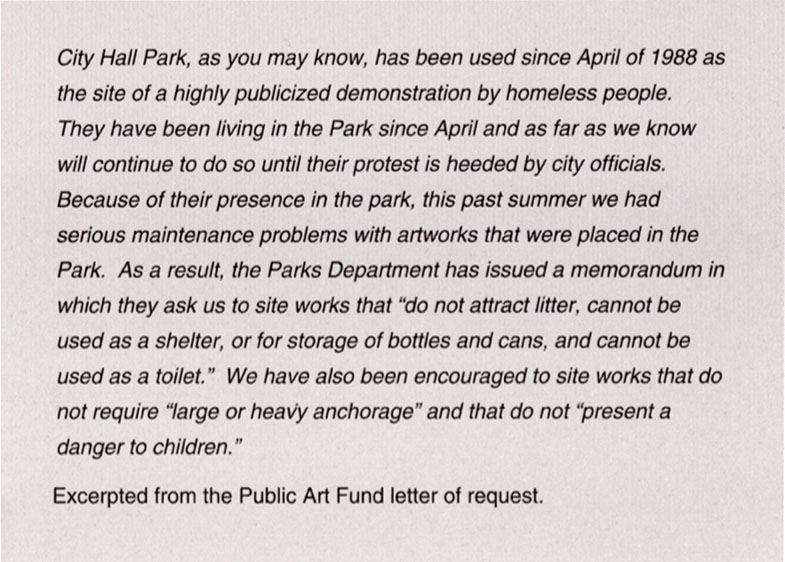|
|
1988
Liberty was conceived as a response to a
1988 request by The Public Art Fund, Inc. - a non-profit arts organization in
New York that sponsors art in public spaces - for a proposal for an artwork to
be installed in City Hall Park in New York during the summer of 1989. (See
excerpt of letter of request from the PAF on left.)
At the time of this request for proposal, City
Hall Park was a politically-charged site, having been the location of a
homeless person's death due to "exposure to the elements." The
Mayor's administration was politically right-wing and unresponsive to the
problem of homelessness in an election year.
Site research revealed that City Hall Park (once
the northern-most boundary of the city as it was developed in the colonial
period, and thus the site of the socially marginal at the time) had housed a
burial ground for "negroes, paupers, and criminals...," as well as
having been the site of the first almshouse in New York. The almshouse, built
in 1797 to sequester "paupers, prostitutes, and other social
misfits," was torn down in 1857 when a scarcity of food precipitated
riots, forcing the city to create public work employment. One such project was
to tear down the almshouse.
The proposal involved the displacement of the plan configuration of the almshouse from its original site to the site in the park accommodating a Liberty flag. This plan configuration was to be indicated by the placement, at each cornerstone of the plan footprint, of fifteen-foot flagpoles displaying contemporary American flags, with the existing park Liberty Pole being used to mark one of the points.
The visual language of the flagpole was both specific to this setting and to a civic landscape in general. As such it allowed for a vocabulary of camouflage in an institutionally conflictual setting, with the excess of flagpoles signaling a difference, accompanied by a sign on the site delineating its repressed history. Upon submission, half of the PAF board found the project "too political" and half found the project "not political enough." The project was never realized due to the fact that the Mayor's office did not approve it.
© 2025 Silvia Kolbowski


